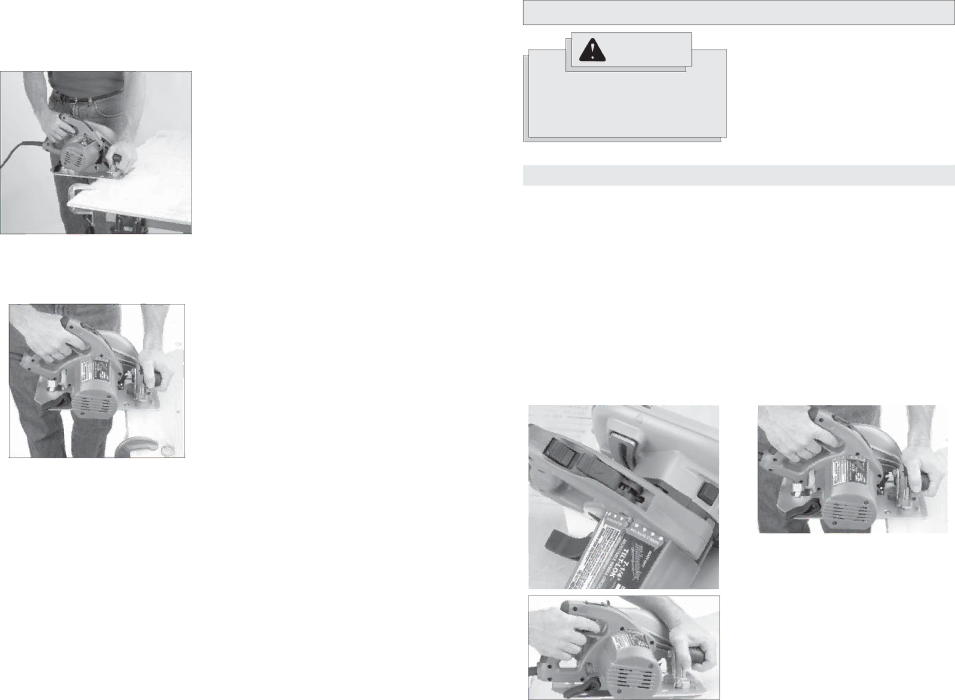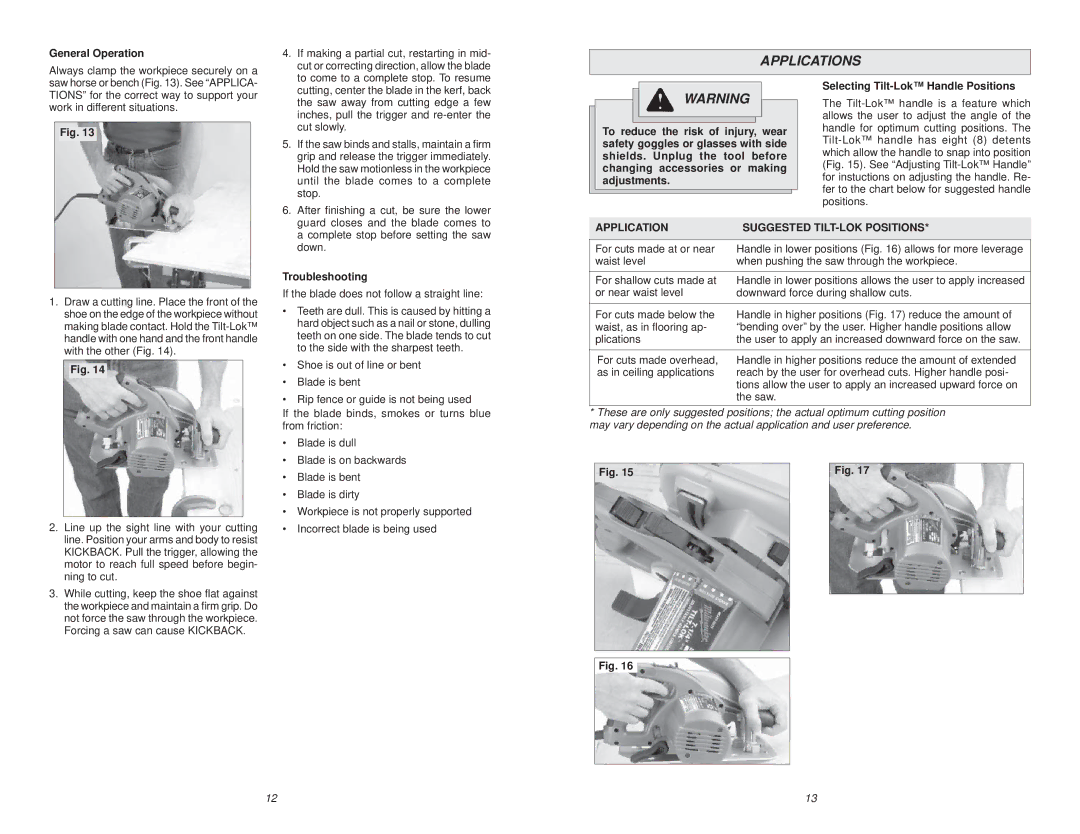
General Operation
Always clamp the workpiece securely on a
4. If making a partial cut, restarting in mid- |
cut or correcting direction, allow the blade |
to come to a complete stop. To resume |
APPLICATIONS
saw horse or bench (Fig. 13). See “APPLICA- TIONS” for the correct way to support your work in different situations.
Fig. 13
cutting, center the blade in the kerf, back |
the saw away from cutting edge a few |
inches, pull the trigger and |
cut slowly. |
5. If the saw binds and stalls, maintain a firm |
grip and release the trigger immediately. |
Hold the saw motionless in the workpiece |
until the blade comes to a complete |
stop. |
6. After finishing a cut, be sure the lower |
guard closes and the blade comes to |
WARNING
To reduce the risk of injury, wear safety goggles or glasses with side shields. Unplug the tool before changing accessories or making adjustments.
Selecting
The
1.Draw a cutting line. Place the front of the shoe on the edge of the workpiece without making blade contact. Hold the
Fig. 14
2.Line up the sight line with your cutting line. Position your arms and body to resist KICKBACK. Pull the trigger, allowing the motor to reach full speed before begin- ning to cut.
3.While cutting, keep the shoe flat against the workpiece and maintain a firm grip. Do not force the saw through the workpiece. Forcing a saw can cause KICKBACK.
a complete stop before setting the saw |
down. |
Troubleshooting
If the blade does not follow a straight line:
•Teeth are dull. This is caused by hitting a hard object such as a nail or stone, dulling teeth on one side. The blade tends to cut to the side with the sharpest teeth.
•Shoe is out of line or bent
•Blade is bent
•Rip fence or guide is not being used
If the blade binds, smokes or turns blue from friction:
•Blade is dull
•Blade is on backwards
•Blade is bent
•Blade is dirty
•Workpiece is not properly supported
•Incorrect blade is being used
APPLICATION | SUGGESTED |
|
|
For cuts made at or near | Handle in lower positions (Fig. 16) allows for more leverage |
waist level | when pushing the saw through the workpiece. |
|
|
For shallow cuts made at | Handle in lower positions allows the user to apply increased |
or near waist level | downward force during shallow cuts. |
|
|
For cuts made below the | Handle in higher positions (Fig. 17) reduce the amount of |
waist, as in flooring ap- | “bending over” by the user. Higher handle positions allow |
plications | the user to apply an increased downward force on the saw. |
|
|
For cuts made overhead, | Handle in higher positions reduce the amount of extended |
as in ceiling applications | reach by the user for overhead cuts. Higher handle posi- |
| tions allow the user to apply an increased upward force on |
| the saw. |
*These are only suggested positions; the actual optimum cutting position may vary depending on the actual application and user preference.
Fig. 15 |
| Fig. 17 |
|
|
|
|
|
|
Fig. 16
12 | 13 |
